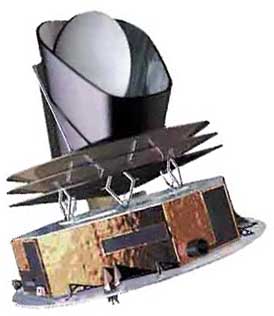An analysis of data collected by the Planck Telescope supports a period of rapid expansion shortly after the big bang.
 The Planck telescope was launched in 2009, with a range of scientific aims, including observing the Cosmic Microwave Background Radiation, the "glow" left behind from the big bang.
The Planck telescope was launched in 2009, with a range of scientific aims, including observing the Cosmic Microwave Background Radiation, the "glow" left behind from the big bang.
These latest results mark the most detailed ever study of the CMBR, improving on previous data collected by the Cosmic Background Explorer (COBE) and the Wilkinson Microwave Anisotropy Probe (WMAP) missions.
The CMBR comes from a period when the universe first began to cool, just a few hundred thousand years after the Big Bang. The very early universe was permeated by a hot "soup" of subatomic particles. Only once the first neutral atoms of hydrogen and helium condensed out of the plasma did the universe become transparent enough for photons of light to travel freely. This is the light that we now see as the CMBR.
Tiny temperature variations in this radiation can give clues as to the structure of the early universe, allowing scientists to refine their models. The data released so far support the idea of a period of rapid expansion shortly after the big bang, and offer tantalising hints as to what caused this expansion...










Comments
Add a comment